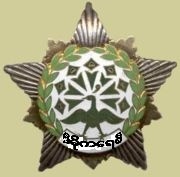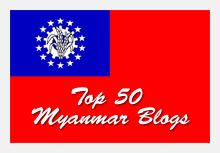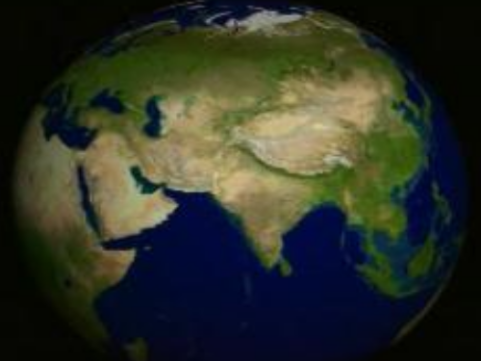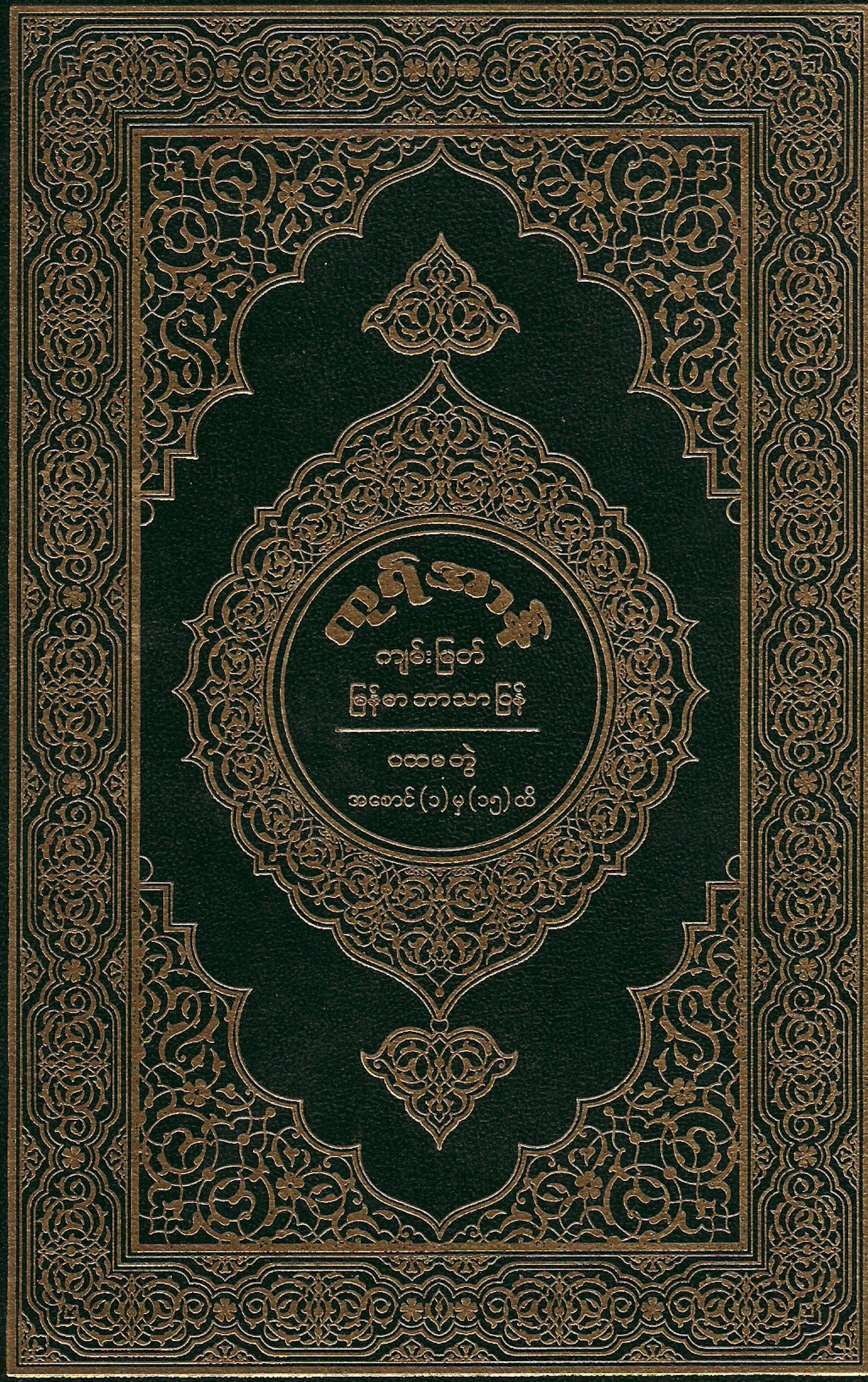Panthay; Latest diaspora
Latest diaspora
The demise of the Sultanate had shattered the hopes of all the Panthays for a bright future in their own Islamic kingdom in Yunnan. The blood-bath that occurred in its wake had made the decision for many Panthays: to flee the country for those who could make it, and not to return to Yunnan for those who were already outside. In the first category were the refugees in the Wa State, and in the second were those who were in Mandalay at the time the Sultanate fell. As has been said earlier, the Panthays in Mandalay had left their families behind when they set out for Burma. These Panthay businessmen now realized that it would be at least some years before they would see their families in China again. Thus, many of them started raising second families in Mandalay by taking Burmese Muslim wives. This explains why most of the first-generation Panthays of Mandalay had non-Chinese wives and why their descendants today are Burmanized. In later years, when things became more favorable, these early Panthays of Mandalay alternated their stay between their Chinese and Burmese wives.
[edit] Colonel Mah Too-tu settled in Mandalay for good
Colonel Mah Too-tu found himself in the same situation. When he came to Mandalay with the mission to build the Panthay Mosque, he left his family behind in Yunnan. When the mission had been accomplished, he was assigned by the Sultan to take charge of the Panthay business enterprise at Taryedan.[27] When the Sultanate fell, Mah Too-tu was stranded at Mandalay. For a man of his rank and stature, going back to Tali-fu meant sure execution by the Manchu authorities. Mah Too-tu had no other alternative but to settle down in Mandalay. Since November 1868 he had bought a plot of land with a house on it for 80 pieces of one-kyat coins from Khunit Ywa-sa Princess.[28] The plot happened to be at the southwest corner of the land granted by King Mindon to the Panthays (corner of’ 36th and 80th Street). The addition of Mah Too-tu’s plot made the Panthay compound into a full square. On 7 June, 1873, Mah Too- tu married Shwe Gwe, a lady from Sagyin-wa village near Amarapura, who happened to be the daughter of a princess of Manipur brought to Mandalay as a captive by the Burmese king.[29] Mah Too-tu spent the last years of his life at the Panthay Compound with his Burmese wife.
[edit] Panthays established in Mandalay
After the mass exodus from Yunnan, the number of Panthays residing in Mandalay gradually increased. The new arrivals, usually families, came by way of Bhamo or via the Wa State. When the land for the Panthays was granted by King Mindon, there were a few houses on it, in addition to several old graves.[30] This shows that the place had been an abandoned graveyard. In the years immediately following the completion of the mosque, the number of houses in the Panthay Compound was less than twenty. There were also between ten and twenty Panthay households living in other parts of Mandalay. But a trickle of new arrivals added to their number.
The establishment of the Panthay Mosque in 1868 marked the emergence of the Chinese Muslims as a distinct community at Mandalay. Although the number of this first generation of Panthays remained small, the Mosque, which is still standing, constitutes a historic landmark. It signifies the beginning of the first Panthay Jama’at (Congregation) in Mandalay Ratanabon Naypyidaw.
[edit] Early 20th century
Over the next thirty or so years the Panthays of Panglong continues to prosper, though by the early 1920s a feud had begun to develop between them and the Was of neighbouring Pankawn. In 1926 this erupted into the local “Wa Panthay War”, in which the latter were victorious and as a result of which Panglong threw off its vassalage to Pangkawn and reinforced its dominance over the trade routes of the region31. In addition to legitimate trading, by this time the Panthays, of Panglong were securely established as ‘the aristocrats of the opium business’ in the region now commonly designated the Golden Triangle, leaving the Petty and risky business of peddlings this highly profitable commodity locally to Shan and Han Chinese dealers, and instead running large, well-armed caravans in long-distance convoys far into Siam, Laos, Tonking and Yunnan. When Harvey visited Panglong in 1931 he found that Panthay numbers had risen to 5,000 (‘including local recruits’), that they were financed by Singaporean Chinese, had 130 mauser rifles with 1,500 mules, and exported opium by the hundredweight into French, Siamese and British territory, each muleload escorted by two riflemen.
Meanwhile, despite the relative importance of Panglong and the profits to be made from the long-distance caravan, other Panthays moved further into Burma, initially as miners anxious to exploit the ruby mines of Mogok; the Badwin silver mines of Namtu in the Northern Shan State, the jade mines of Mogaung in Kachin State. Numbers of Panthay restaurateurs and innkeepers, merchants and traders settled in the urban centres of upland Burma – chiefly at Lashio, Kengtung, Bhamo and Taunggyi – to service the needs of theses miners, passing caravaneers and the local inhabitants, whilst other settlements largely devoted to trade with the indigenous Shan and Karen populations sprang up along the Salween River. Finally, other Panthay elements moved to the major urban centres of the Burmese lowlands, most notably to Mandalay and Rangoon, where they flourished as merchants and representatives of their up – country fellows, as well as middle-men between Panglong and the other “Overland Chinese” settlements of Upper Burma and the “Overseas Chinese” community of the lowland port-cities. Bassein and Moulmein must also have attracted some Panthay settlement, the latter port being a terminus of the overland caravan trade from Yunnan in its own right, via the northern Thai trade route through Kengtung, Chiang Mai and Mae Sariang.
During the greater part of the period of British rule in Burma these Panthay settlers flourished, specialising in all levels of commerce from the international gem (and opium) markets to shop – and inn-keeping, mule-breeding and peddling or hawking – indeed Yunnanese peddlars (who may or may not have been Muslim) even penetrated into the unadministered and inaccessible hill tracts of “The Triangle” between Mali Hka and Nmai Hka, to the north of Myitkyina]]. Chiefly, however, beyond the urban centres of the Burmese lowlands, the Panthays continued their involvement in the caravan trade with Yunnan, transporting silk, opium, tea, metal goods and foodstuffs (eggs, fruit, nut and even the renowned Yunnanese hams (doubtless for consumption by their Han fellow countrymen) from China to Burma, and carrying back European manufactured goods, broadcloths, specialised foodstuffs (edible birds nests, sea slugs) and above all raw cotton, to Yunnan.
Because of the essentially itinerant nature of this caravan traffic and the semi-licit or illegal nature of some aspects of the trans-frontier trade, it has always been difficult to provide accurate statistics for the distribution and numbers of “Panthay” Chinese settled in Burma, Indeed, rejection of the term “Panthay” by the Chinese Muslims, relatively easy confusion between Hui and Han Chinese by uninformed or overworked census officials, and an inherent suspicion of government bureaucracy (which may seek to control movement or to levy taxes) has made accurate census-taking amongst the Panthay of Burma all but impossible. Thus, in 1931 Harvey estimated the population of Panglong (which was predominantly Panthay) at 5,000 persons. Yet official estimates put the Panthay population of Burma at 2,202 for 1911 (1,427 males and 775 females), whilst by the 1921 Census of India this had declined to 1,517 (1,076 males and 441 females), and by 1931 to 1,106 (685 males and 421 females).
[edit] World War II and independence
A Census for 1941 was never taken, being interrupted by World War II and the Japanese invasion; indeed, it was as a result of the Japanese invasion the main Panthay settlement at Panglong was destroyed, and many Panthay fled to Yunnan, or crossed the largely unpoliced jungle frontiers into Thailand and Laos to escape Japanese persecution. The traditional dominance of Panthay in the trade of the Burma-Yunnan frontier region was also set back by the construction of the Burma Road between Lashio and Kunming in 1937-38, and by the exodus of thousands of Yunnanese refugees and Kuomintang troops following the seizure of power by the Chinese Communists in 1949. As a result of these developments, which brought a flood of predominantly Han, and not Hui, “Overland Chinese” to the Burmese Shan States, many Panthay seem to have chosen to migrate to northern Thailand, where their communities continue to flourish.
No comprehensive census of the remaining Panthay population within Burma has been taken since 1931, and restrictions on travel for foreigners, combined with the inherent weakness of central government control over those outlying areas of the Shan and Kachin Hills where many Panthays live, makes any attempt to calculate Burma’s present (1986) Panthay population almost impossible (though an exaggerated estimate of 100,000 Panthays resident within Burma appeared in the Burmese daily Hanthawaddi in 1960. Certainly readily identifiable Panthay communities continue to exist in several areas which are open to foreign travel (Rangoon, Mandalay, Taunggyi), as well as, by report, in Kengtung, Bhamo, Mogok, Lashio and at Tanyan, near Lashio. Wherever they have settled in sufficient numbers, the Panthays have established their own mosques and madrasas (for example the Panthay Balee at Mandalay Short Lane, Rangoon, at Mandalay and in Myitkyina). Some of these mosques are in “pseudo-Moghul” style, clearly having been influenced by Indian Muslim tastes and styles, whilst others (notably at Mandalay) have Chinese architectural features. As with the Hui in China, the Burmese Panthay are exclusively Hanafi; few are conversant with more than the most elementary phrases of Arabic, and quite often when a Panthay imam is not available to care for the spiritual welfare of a community, a South Asian or Zerbadi Muslim is engaged instead.
[edit] Present Panthays in Myanmar
Panthays are spread over many parts of Myanmar with their mosques in Yangon, Taungyi, Lashio, Tangyang, Kyaington, Pyin-Oo-Lwin, Myitkyina and Mogok.[31]
[edit] References
-
^ (Scott, 1900, 607)
-
^ (Yule & Burnell, 1968, 669)
-
^ (Forbes, 1987, 292)
-
^ (Forbes, 1987, 290)
-
^ (Forbes, 1987,193)
-
^ (Anderson, 1876, 2)
-
^ (The Sladen Report, 1871, 7)
-
^ (The Sladen Report, 1871, 4)
-
^ (Anderson, 1876, 4)
-
^ (Forbes 1987, 293)
-
^ (Ba Shin, 1962, 2)
-
^ (Ba Shin, 1961, 2)
-
^ (Anderson, 1876, 233)
-
^ (Anderson, 1876, 233)
-
^ (Anderson, 1876, 343)
-
^ (Anderson, 1876, 242)
-
^ (Interview with U Aung Myint)
-
^ (Interview with Haji U Ba Thi alias Haji Adam (born 11 October, 1908) a Panthay elder who had served for many years as chairman of the Trust of ‘the Panthay Mosque, on 15 October, 1997.)
-
^ (Interview with Haji U Ba Thi)
-
^ (Sladen Report, 1876,5)
-
^ (Thaung, 1961, 481)
-
^ (Thaung, 1961, 481)
-
^ (Thaung, 1961, 481)
-
^ (Anderson, 1876, 243)
-
^ (Thaung, 1961, 482)
-
^ (Scott, 1901, 740)
-
^ (Interview with Haji U Ba Thi)
-
^ (Family Parabaik)
-
^ (Than Tun, 1968, 19)
-
^ (Interview with Haji U Ba Thi)
-
^ Message from Maung Ko Ghaffari, Chief Editor, Light of Islam Magazine, Myanmar in Feb. 2007
[edit] Bibliography
1. Anderson, John, Mandalay to Momien: A Narrative of the Two Expeditions to Western China of 1868 and 1875 (London: Macmillan, 1876).
2. Ba Shin, Lt. Colonel, “Coming of Islam to Burma Down to l700 AD.,” Asian History Congress (New Delhi: Azad Bhavan, 1961).
3. Forbes, D.W., “The Role of Hui Muslims in the Traditional Caravan Trade between Yunnan and Thailand,” Asian Merchants and Businessmen in the Indian Ocean and the China sea: 13-20 Centuries(French Journal published under the direction of Denys Lombard & Jean Aubin), (Paris: School of Higher Studies in Social Sciences, 1987).
4. Kaye, J.W., Major Sladen’s Report on the Bhamo Route, (In Continuation of’ Parliamentary Paper No. 251, of Session 1868-9), (London: India Office, 1871), Microfilm copy.
5. Scott, J. George, GUBSS, 1, i ( Rangoon Government Printing, 1900).
6. ibid GUBSS, ii, ii (Rangoon- Government Printing, 1901).
7. Thaung, Dr., “Panthay Interlude in Yunnan: A Study in Vicissitudes Through the Burmese Kaleidoscope,” JBRS Fifth Anniversary Publications No. 1 (Rangoon Sarpy Beikman, 1961).
8. Yule, Col. Henry & Burnell, A. C., Hobson-Jobson- A Glossary of Colloquial Anglo-Indian Words and Phrases, and of Kindred Terms, Etymological, Historical, Geographical And Discursive (Delhi-.Munshiran Manoharlal, 1968), Reprint.
9. Than Tun, Dr. (Professor of History), History on Tour, 111, (In Myanmar) (Yangon Nantha House, August 1968).
10. Parabaik dated 13 November, 1868 containing a short account of’ Mah Too-tu’s purchase of land and house from Khunit Ywa-sa Princess (a family parabaik of the writer).
11. Interview with U Aung Myint (aged 75), a higher grade pleader, before the war, and buildingcontractor after the war, on 11 December, 1987. Although a Myanmar Buddhist, U Aung Myint wasvery friendly with Khala Kyawt, a Myanmar Muslim who had lived in the Panthay Compound formany years in the pre-war days and who had in her possession a parabaik manuscript on the Tayoktan quarrel between the Chinese and the Panthays, and the circumstances leading to the granting of land by King Mindon for the residence of Panthays and the construction of the Parithay Mosque. U Aung Myint had personally read this parabaik, which, unfortunately was destroyed by fire during the war. U Aung Myint had lived close to the Panthay Compound before the war and the house in which he had lived is said to be inside the Panthay Compound at one time.
[edit] See also
[edit] External links
-
Myanmar Muslim Information Centre (MMIC)-[2]
-
Burma Digest Bo Aung Din’s Letter 11- About Myanmar Muslims. and Myanmar Indian Muslims. [3]
-
Burma Digest Bo Aung Din’s Letter 10- Myanmar Muslims, Myanmar Chinese Muslims and Migrants. [4]
-
Burma Digest Bo Aung Din’s Letter 9- Myanmar Muslims.[5]
-
Myanmar Muslim news- [6]
-
Burmese Muslims Network- [7]
-
Islamic Unity Brotherhood [8]
-
Myanmar Muslim political Awareness Organization- [9]
-
Panthay on line community- [10]
-
Office of UN High Commissioner for Human Rights [11]
-
US Department of State, International Religious Freedom Report 2005 on Burma [12]
-
US Department of State, Burma, Country Reports on Human Rights Practices- 2005
-
Released by the Bureau of Democracy, Human Rights, and Labor [13]
-
Amnesty International’s report on Burma [14]
-
UK Conservatives’ Human Rights [15]
-
Refusal of Identity Cards for Burmese Muslims [18]
-
Human Rights issues in Burma [21]
-
PRAYERS FOR BURMA [22]
-
Priestly, Harry. “The Outsiders“, The Irrawaddy, 2006-01. Retrieved on 2006–07-07.
-
Butkaew, Samart. “Burmese Indians: The Forgotten Lives“, Burma Issues, 2005-02. Retrieved on 2006–07-07.
-
The Persecution of Muslims in Burma, by Karen Human Rights Group
Filed under: Burmese Chinese Muslims, Burmese Muslims, Islam, Islam in Myanmar, Myanmar, Panthays, Wikipedia | Tagged: , Burma, Burmese Chinese, Burmese Chinese Muslims, Burmese History, Burmese Opposition, Corruption, Daw Aung San Suu Kyi, Dictators, Ethnic Minorities, Military Junta, Myanmar, NLD, Panthays, Racial Discrimination, SPDC |












+(Small).jpg)


Leave a comment